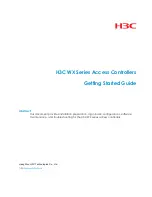
45
Basic setting / binding transmitter and receiver
Basic transmitter settings
Before programming specific parameters, there are some
basic settings to be made.
Stick mode
With a winged aircraft model, there are four main options
for assigning the four control functions (aileron, elevator,
rudder and throttle/brake flap) to the two joysticks. The
specific choice of options depends on the individual
preferences of the particular model pilot.
With the
mxs-8, MXS-12
HoTT, pilots can only
change between two modes.
»MODE 4« (Gas links)
»MODE 1« (Gas rechts)
Tiefenruder
Höhenruder
Seiten
r. links
Seiten
r. rechts
Motor Vollgas
Motor Leerlauf
Quer
r. links
Quer
r. rechts
Motor Vollgas
Motor Leerlauf
Quer
r. links
Quer
r. rechts
Tiefenruder
Höhenruder
Seiten
r. links
Seiten
r. rechts
The
mxs-8, mxs-12
HoTT transmitter are
supplied in Mode 1, i.e with the throttle at right, as a
standard feature. This is the preferred configuration for
almost all aircraft models and normally does not need to
be changed.
To select stick mode, the joystick’s ‘throttle channel’,
which is not self-neutralizing and usually on the right as
supplied, may have to be changed to the other side. Refer
to the section ‘Mode setting’ on pages 12-14.
Connecting servos for a winged model with or
without motor, with an aileron servo and ‘normal’ tail
type
Quer
Höhe
Seite
Quer
Seitenruder
Querruder (links)
Höhenruder
Querruder rechts (oder Telemetrie-Sensor)
Empfängerstromversorgung
Bremsklappen- oder Motorservo
oder Regler bei Elektroantrieb
Binding transmitter and receiver
‘Binding’ has already been performed at the factory for
the combination supplied with the set. To bind an additio-
nal receiver, proceeds as follows:
•
Power on first the transmitter and then the receiver:
The red LED lights up on the receiver.
•
The LED on the transmitter rapidly flashes green,
indicating that no bound receiver is connected.
•
Press and hold the SET key on the receiver and
then briefly press the transmitter’s POWER key to
start the binding procedure.
•
If the receiver’s LED goes out within about 10 se-
conds, the binding process has been successfully
•
completed. You can now release the SET key.
•
Your model-receiver combination is now ready
to operate. At the same time the LED on the
transmitter changes, now no longer flashing but
continuously green.
•
On the other hand, if the red LED on the receiver
does not go out after approx. 10 seconds, the bin-
ding process has failed. In this case, try changing
the position of antennas then repeat the entire
procedure.
Binding several receivers with one model
Several receivers can also be bound with one model if
required. First bind the receivers individually as described
below.
In subsequent operation, only the receiver
last bound with the model will establish a telemetry
connection with the transmitter.
Any telemetry sensors
which may be built into the model should therefore
be connected to that receiver, because only the most
recently bound receiver is capable of transmitting sensor
data via the return channel. The second, and all other
receivers, operate in parallel to the one most recently
bound but completely independently of it and in slave
mode, with the return channel deactivated.
If a receiver is switched on that does not transmit tele-
metry signals, the transmitter LED flashes green and the
corresponding beep is heard.
Important notice:
During the binding procedure be sure the transmitter
is always far enough away from receiver antennas.
To be on the safe side, keep them at least 1 m apart.
Otherwise there is a risk of a faulty connection to the
return channel and of malfunctioning.
















































